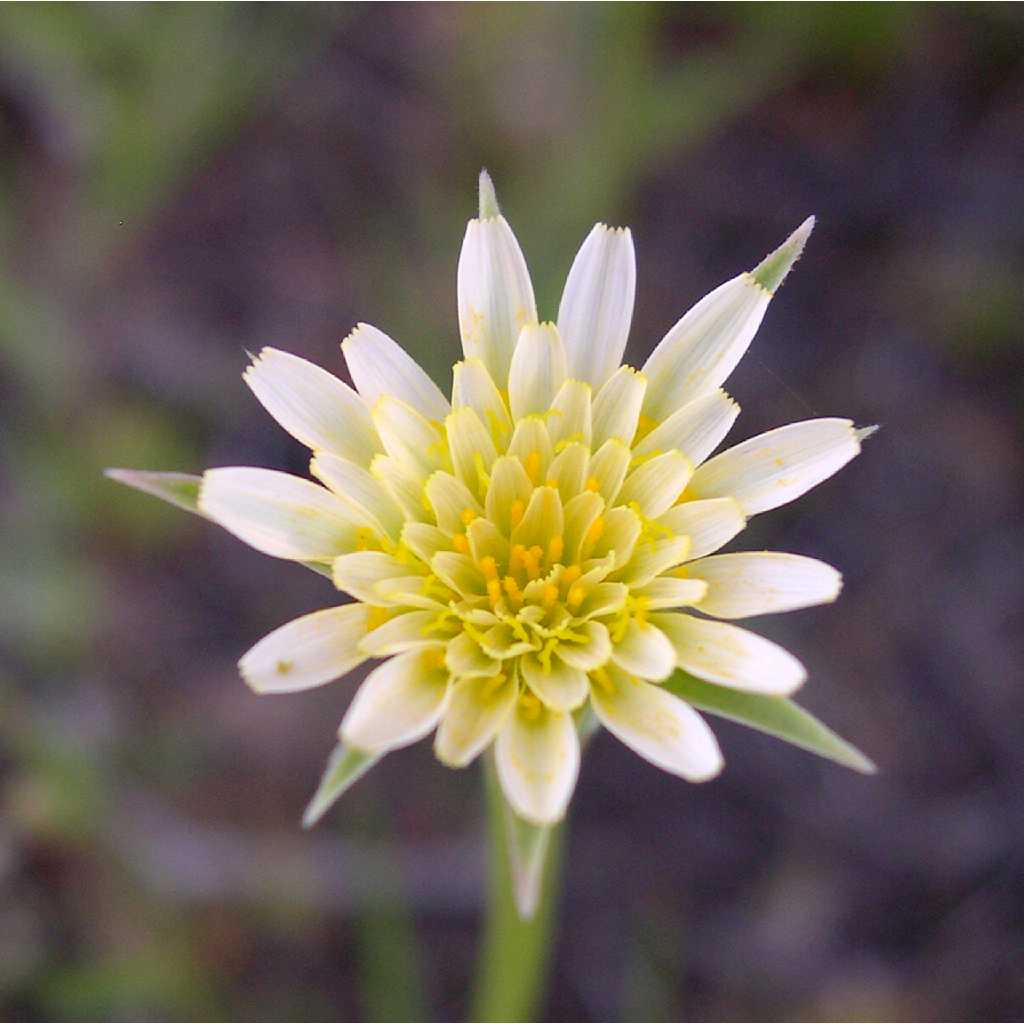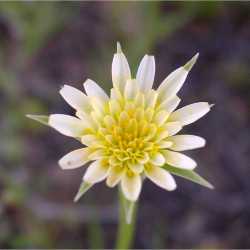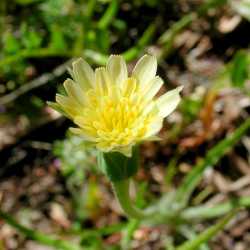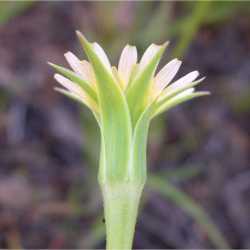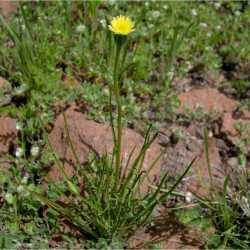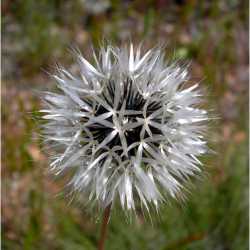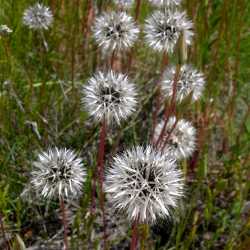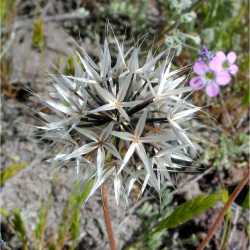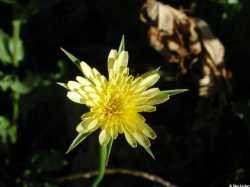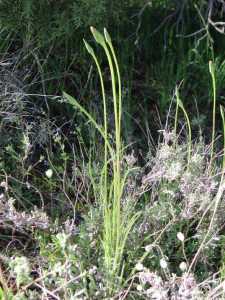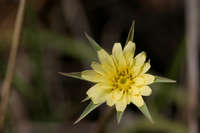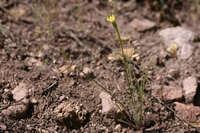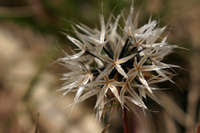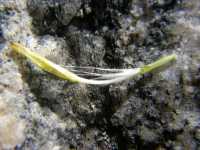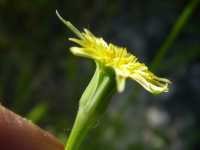Leaves 5-30 cm. Peduncles 5-40 cm. Involucres 10-40 mm after flowering. Phyllaries reflexed in fruit, oftenreddish, outer 2-8, inner 3-18. Ligules 2--10 mm, equaling or barely surpassing phyllaries at flowering . Cypselae 7-17 mm; pappi: scales 5-15 mm, apices notched 1-2 mm, bristles delicate, 4-6 mm. 2n = 18.
Flowering Mar-May. Grasslands, shrub steppe, open oak woodlands. chaparral, s coastal scrub, deserts, usually well drained soils on slopes, road banks, serpentine gravels, sandy desert flats; 10-1800 m; B.C.; Ariz., Calif., Idaho, Nev., N.Mex., Oreg., Tex., Utah, Wash.; Mexico (Baja California, Sonora).
Uropappus lindleyi grows in the Columbia-Snake Rivers Plateau Province, Basin and Range Province, Interior Mountains and Plateaus System, and the Pacific Border System.
Duration: Annual
Nativity: Native
Lifeform: Forb/Herb
General: Spring ephemeral with milky sap, glabrous or slightly puberulent herbage, scapes 10-60 cm tall.
Leaves: Linear to linear-lanceolate or pinnate with few slender segments, in basal rosette, 10-15 cm long, stems above leafless with small glands near flower head.
Flowers: Each stem bearing single, erect head; outer involucral bracts 1 cm long, acute, ligules barely surpassing involucre, ephemeral, pale yellow but drying reddish or purplish.
Fruits: Cypselae 8.5-10 mm long, blackish, linear-cylindric and slightly tapered at each end, apex slightly flared; pappus with 5 papery, silvery, linear-lanceolate scales 9-10 mm, these deeply notched at the apex with long, slender awn from notch.
Ecology: Found on mesas, plains, outwash slopes and arroyos below 5,000 ft (1524 m); flowers March-June.
Distribution: Most of western N. Amer., from B.C. south to CA and west to TX, UT, ID; south to n MEX.
Notes: Distinct by being scapose with all basal,divided leaves, milky sap and especially the shiny silver pappus awns.
Ethnobotany: Unknown
Etymology: Uropappus refers to the pappus having a long tail-like dip, while lindleyi is named for John Lindley (1799-1865) a British botanist.
Synonyms: Microseris linearifolia, Uropappus lindleyi, Uropappus linearifolius
Editor: SBuckley 2010, FSCoburn 2015


